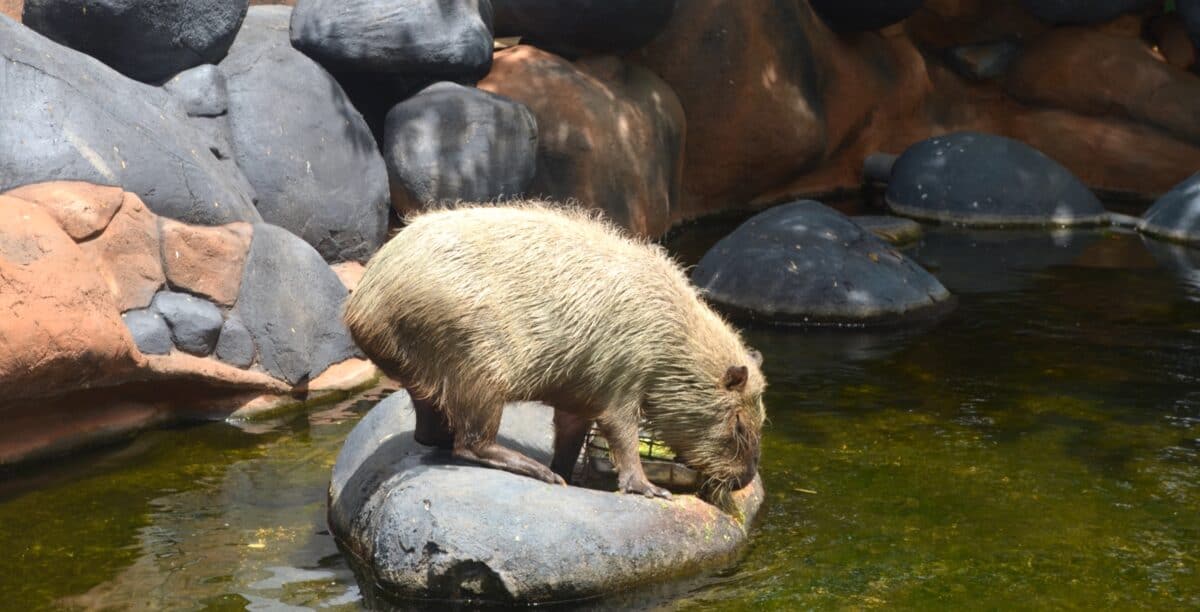How Much Does A Pet Capybara Cost?

Thinking about getting a pet capybara? It’s not impossible, but it’s a lot of work. It’s not cheap either!
The Capybara
The initial cost for a capybara will be the capy itself. This is going to vary based on the age, location, and breeding of the capy, but it won’t be cheap.
Typical costs for a capybara are $2500 to $3500. Prices can dip down to around $800-$1000 for baby capybaras.
Most of these, at least in the United States, a located in the southern where ownership is legal, transportation is legal, and the climate is agreeable. That typically means Arizona, Florida, and Georgia.
Enclosure
This is where your capy lives. You’ll need fencing, lots of water, plants, natural elements, and perhaps some forms of toys or obstacles for the rodent.
Pricing out an enclosure is difficult as fence type, water structures, plant placements, and all these other things can vary wildly with each enclosure.
Factors will also vary based on where you live. For example, if you live a bit too far north or south, it might be too cold to be optimal for a capybara, which means a warm enclosure during the cooler months.
Read up on capybara enclosure design[1]Capyworld: https://capybaraworld.wordpress.com/category/capybara-enclosure-design/ and then ballpark your price, but it’ll likely be in the low thousands of dollars to setup initially and then hundreds a year to maintain and improve.
Food
Feeding a capybara is no simple task. They will be healthy only with a clean diet that is extremely low in fat and sugar[2]Capyworld: https://capybaraworld.wordpress.com/2021/06/16/what-should-i-feed-my-pet-capybara-2/. This means a steady supply of:
- Grasses
- Aquatic plants
- Guinea pig feed
- Hay (like Timothy hay and Orchard hay)
Keep in mind that the capy can get to be over 100 pounds, so you are looking at significant quantities of food.
Also, two important factors can’t be ignored. First, the hay needs to be of a tough nature — sometimes describe as being of “low quality” — in order to be good for grazing and to keep the rodents’ teeth growth under control. Second, the hay and other grazing foods should always be available. These aren’t a meal in the way a dog would eat a few times a day, but rather a constant that is always at hand in some quantity.
If you want to learn about supplements then this article is an excellent read and will walk you through all the food additions you might want to consider for your capybara. For our purposes, the cost here will be minor compared to that of daily feeding.
If you are trying to get a feel for food pricing, keep in mind that it will vary significantly based on your location and your source. For example, if you try to buy Timothy hay here are some sample prices (as of September 2022):
- Amazon.com: 25 pounds for $47.17
- SmallPetSelect.com: 40 pounds for $80
- Tractor Supply: 50 pounds for $40
- Allhay.com (Local Hay): 40-70 pound bale for $5
The lesson here is that you’ll need to buy your hay locally, from a farm or farm supply store, in order to keep pricing sane. Capybara are not rabbits or gerbils that need a few ounces of Timothy hay a day, they are much big animals with much great food demand. This means you’ll need local sources of high quality, untreated grasses.
